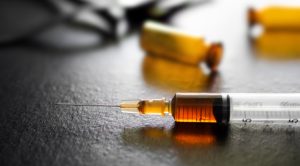
Plump, luscious lips have always been in style across the globe, but what if you were not blessed with naturally gorgeous puckers? Fortunately, painless and non-invasive lip injection procedures exist to help give lips an instant glow-up. Read on to know how a lip injections procedure works.
What are lip injections?
Lip injections or fillers are substances that are injected to reshape the lips and replace lost collagen, giving the lips a fresher, plumper look. The most commonly used fillers are composed of hyaluronic acid and some type of anesthetic, like lidocaine.
The good thing about lip filler injections is that they can be injected in a matter of minutes. A typical procedure can last as long as 2 hours but can be as short as 30 minutes depending on the kind of result you want to achieve. Hyaluronic acid is naturally absorbed by the body over time which means that lip injections are a quick but temporary solution if you want full and plump lips. Lip injections are also non-surgical and less expensive compared to lip implants, making them the ideal option for those who want to avoid the complications of cosmetic surgery.
Lip Injections Procedure: A Step By Step Guide
Consultation
Lip injections are done by board-certified dermatologists or aesthetic surgeons. Although this is a minor procedure, your doctor still needs to make a thorough assessment of your lips, your face, and your health to ensure that you are a good candidate for this procedure.
A thorough examination also involves gathering information to ensure that the procedure does not increase your risk for potential side effects or post-procedure complications. For example, allergies to anesthesia, conditions like high blood pressure or diabetes may mean that your doctor needs to take special precautions during the procedure. It is also during this time that your doctor will give you more information about your options for fillers. Popular choices include Juvederm, Restylane, and Perlane.
Preparation
Once you have chosen your filler injection, your doctor will determine how much is needed to inject and you are ready to proceed. Your doctor may apply a topical numbing agent to the area to lessen the discomfort you will feel during the procedure.
Lip Injection Procedure
Once the numbing agent has taken effect, your doctor will inject the filler on specific areas on and around your lips, often starting at the oral commissures, followed by the area around your Cupid’s bow and then around the lower lip.
Post-Procedure Care
Most fillers come with lidocaine which means your lips may stay numb a few hours after the procedure. Expect a bit of swelling and discomfort a few hours after the procedure. Your doctor may prescribe oral painkillers to help deal with the pain. Your doctor may also advise you to come back for a touch-up in a few weeks if needed. After a short period of observation, you can head home.
Lip injections are the most popular means to restore the natural plump and shapely appearance of lips. It is non-invasive, takes only a few minutes, and requires a short recovery time so it does not disrupt your daily routine.
Get in touch with your doctor or this lip injections Detroit recommendation today to know if this procedure is right for you.



